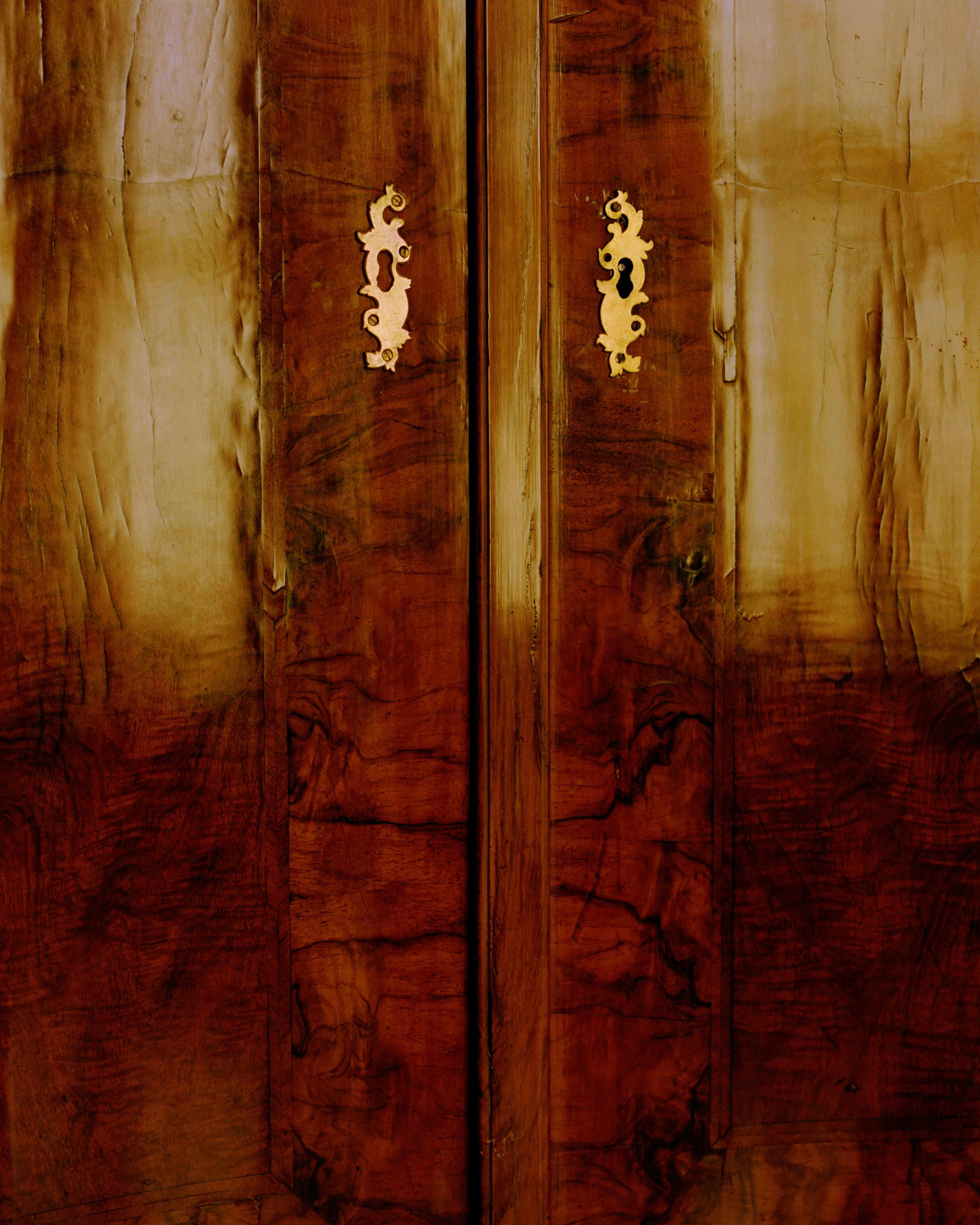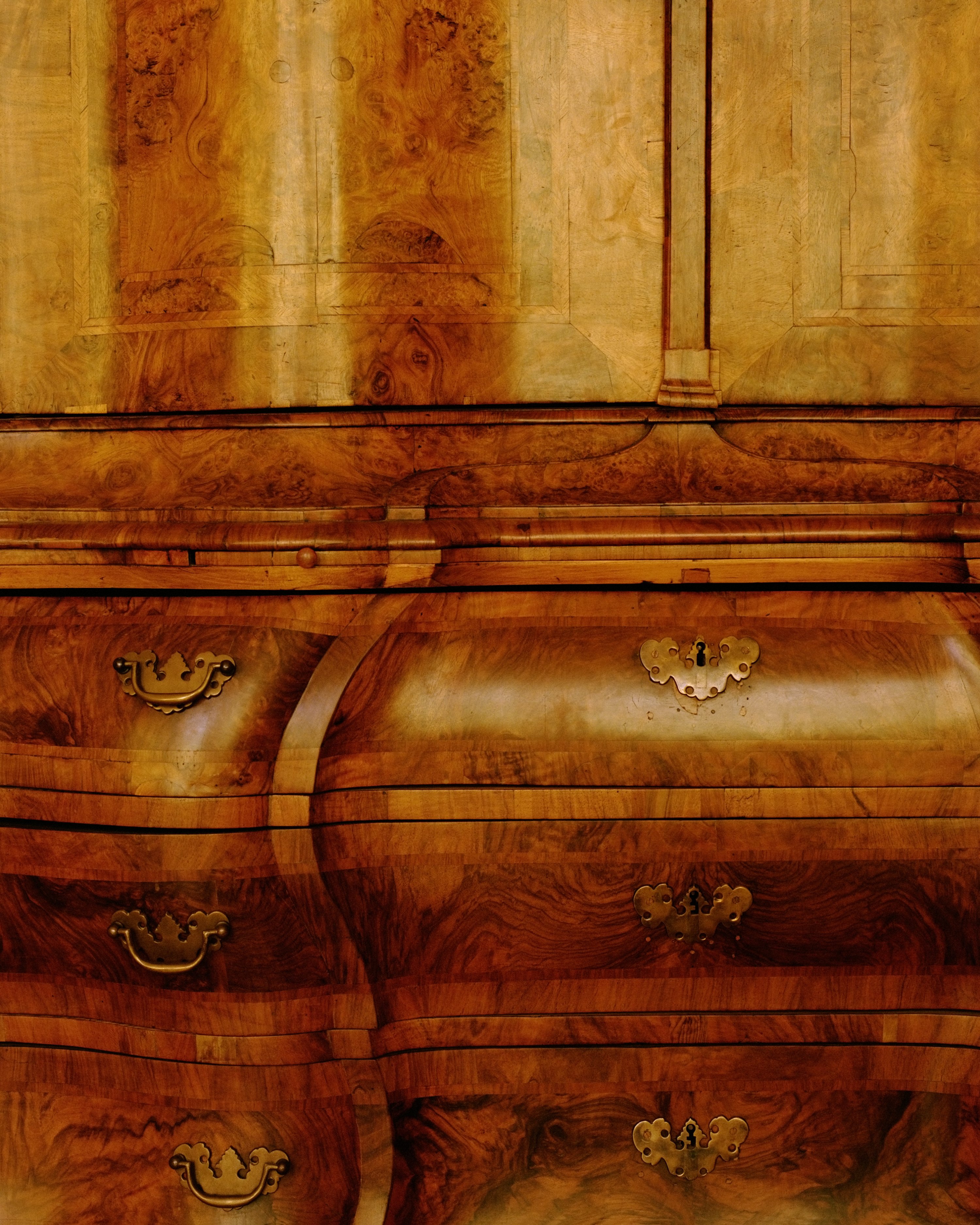Anna Orłowska
b. 1986, Opole
Photographer and visual artist, author of photobooks. She studied photography at the National Film School in Łódź and at the Institute of Creative Photography in Opava. In her early photographic series, she staged situations, applied scenographic solutions, and created narrative suggestions by focusing on characters and experimenting with lighting. In more recent series, she plays with conventions, also utilizing the documentary form. She primarily photographs architecture and interiors, telling stories about what is invisible, silenced, or forgotten.
She often explores themes of knowledge, memory, and the human tendency to distort history, creating idealized and romanticized visions. The artist continually experiments with the medium of photography, using it to create collages and objects as well. She lives and works in Warsaw.
Elena in Johanna's Wedding Dress
FSP ING 0273
This photograph is part of a series in which the artist draws from a familial reservoir of history and memories, deeply rooted in the turbulent fate of the region. The image was taken in the village of Żędowice, before 1945 known as Sandowitz, belonging to the territory of former Prussia.
The picturesque house, linked to a mill, came into the possession of Orłowska's great-grandfather. The titular Elena, the artist's niece, poses in the wedding dress of her great-grandmother, Johanna. The girl sits by a pond created by the construction of water dams, which served as a playground for several generations, including Anna herself. Elena's photograph weaves together the destinies of many generations of the Orłowska family. The magical character of the place, encircled by forests and a river, along with the artistic narrative, evokes a dreamlike, fantastical vision. To give the depiction a contemporary twist, Orłowska chose to reference the style of fashion magazines.
This work was first presented at the “Sankt Anna” exhibition at the Gunia Nowik Gallery in Warsaw (2022). The artworks showcased there narrated the story of the region, providing a backdrop for the micro-histories of families and the individual fates of those who lived through times of distress and upheaval.
Veneer II
FSP ING 0271
The works were presented for the first time in an exhibition at the City Gallery in Gdańsk, where the Main City was almost completely destroyed during the World War II. After its conclusion, most of the buildings were reconstructed using the remnants of the ruins, adding contemporary elements that starkly contrasted with the historical character. In the 1950s and 1960s, the reconstructions were prioritizing a representative facade.
The artist entered into a dialogue with one such space, capturing photographs within the Uphagen’s House, the residence of a wealthy 19th-century merchant. His family, unable to maintain the building any longer, donated it to the city. The interiors of the residence were plundered by Nazi soldiers; thus, much of the furnishings had to be reconstructed.
Through the medium of photography, Orłowska focuses on capturing this multifaceted nature, superficiality, and the tension between the "old" and the "new." The photographs highlight the elegant details of the cabinets from the Uphagen’s House. However, the furniture has been emptied, stripped of its utilitarian function, serving as part of a museum façade that feigns former glory.
The effect would not be as evocative without the artist’s distinctive framing. The frames are adorned with veneer at the front, evoking the technique used to create the original doors. A observer who examines the works from the side will discover that behind the thin layer of elegance lies ordinary plywood. In this way, the artist reminds us that the histories of objects and spaces are composed of layers, periods of splendor, and often unintentional banality—much like the fates of the people who owned them.
Veneer III
FSP ING 0272
The works were presented for the first time in an exhibition at the City Gallery in Gdańsk, where the Main City was almost completely destroyed during the World War II. After its conclusion, most of the buildings were reconstructed using the remnants of the ruins, adding contemporary elements that starkly contrasted with the historical character. In the 1950s and 1960s, the reconstructions were prioritizing a representative facade.
The artist entered into a dialogue with one such space, capturing photographs within the Uphagen’s House, the residence of a wealthy 19th-century merchant. His family, unable to maintain the building any longer, donated it to the city. The interiors of the residence were plundered by Nazi soldiers; thus, much of the furnishings had to be reconstructed.
Through the medium of photography, Orłowska focuses on capturing this multifaceted nature, superficiality, and the tension between the "old" and the "new." The photographs highlight the elegant details of the cabinets from the Uphagen’s House. However, the furniture has been emptied, stripped of its utilitarian function, serving as part of a museum façade that feigns former glory.
The effect would not be as evocative without the artist’s distinctive framing. The frames are adorned with veneer at the front, evoking the technique used to create the original doors. A observer who examines the works from the side will discover that behind the thin layer of elegance lies ordinary plywood. In this way, the artist reminds us that the histories of objects and spaces are composed of layers, periods of splendor, and often unintentional banality—much like the fates of the people who owned them.


